Fire Protection is Environmental Protection
We will need first to understand that it is much better to protect the planet than to repair it afterward. It is less expensive to protect the planet now than to repair it later.
Quote from José Manuel Barroso, President of the European Commission
This also is true for fire protection and has more meaning now than ever. One of the images we all have in mind are the increasing number of wildfires all over the world, the other is the contamination of soil and water through the forever chemical Fluorine, which has been an integral part of firefighting foams for decades. In general, the following applies: holistic, preventive and defensive technical fire protection not only offers lasting safety, but also protects people, property and the environment.
FireDos has seen its mission in the design and manufacture of more efficient extinguishing systems by innovation for decades. This has always been a guiding principle in preventive and defensive fire protection. And thanks to durable technologies and innovative developments, it not only protects lives and property, but also makes the planet safer in the long term.
With each industrial, residential, and natural fire thousands of environmental toxins are released and spread over square kilometers in the air as well as in the ground. Any damage analysis will show the connection between fire protection and environmental protection. Not only smoke, damaged property and fire residues can have a negative impact on the environment, but also substances used in firefighting. These include halon extinguishing agents, which since 1991 may only be used in exceptional cases (e.g. in aircraft) as well as Fluorine, that has been used in firefighting foams since the 1970s. Extinguishing water can also contribute to environmental damage by washing pollutants into the soil and ground water. In general, there is a lot of discussion about how harmful extinguishing agents can be to the environment - but too little about how much environmental damage is prevented when extinguishing systems are used successfully. In principle, the earlier and more successfully a fire is fought, the less its effects will be. At present, the selection for a specific firefighting system is still predominantly based on two criteria: efficacy and costs - the latter unfortunately often is the determining factor for the ultimate decision. Considering the growing focus on ESG principles this must change.
Why does FireDos consider Fire Protection as Environmental Protection?
During the development phase of its foam proportioners one of the focal points of FireDos was the question on how the product can help reduce the environmental impact. On one hand this will be during the manufacturing process, on the other it will be looking at the firefighting aspect itself. Following a range of examples for fire protection being environmental protection.
Longevity of the product
Fire protection equipment is often installed and – fortunately – often will sit idle for a long time, if not for ever. We at FireDos even tell our customers that we hope our equipment is never used in a real incident in their facility. But to assure that the equipment does function reliably when it is needed, the product must be regularly maintained and tested. All FireDos products are designed and manufactured in a way that will assure a longevity of the product paired with a minimum requirement for maintenance.
About the author

Frank Preiss is Managing Director of FireDos GmbH. FireDos are experts in foam concentrate proportioners and monitors for firefighting, focusing on their in-house-developed leading technology and customer service.
ISO 14001 – Reduction of the carbon foot print
Besides being ISO 9001 certified, FireDos has been ISO 14001 certified since 2001. For over 20 years auditors have been reviewing and certifying our efforts in the development, design, manufacture, sales and service for fire-fighting proportioners and monitors in accordance with our Environmental Management System.
Continuously we are striving to reduce our waste, lower energy consumption and optimize efficiencies. At present a focus is being put on the reduction of our carbon footprint. Besides being in the process of converted the lighting of all facilities to LED, we have installed a first phase of solar panels at our Olesno, Poland manufacturing site, where lathing, milling and welding operations are conducted. Presently we are producing 30% of our required energy in house. This will be extended to 50% next year and further plants will follow.
Purely mechanical – no requirement of external power
The purely mechanical concept of the FireDos proportioner consists of a water motor and a piston pump, featuring absolute functional safety. Driven just by the firefighting water flow, no electricity and no backup power supply are required.
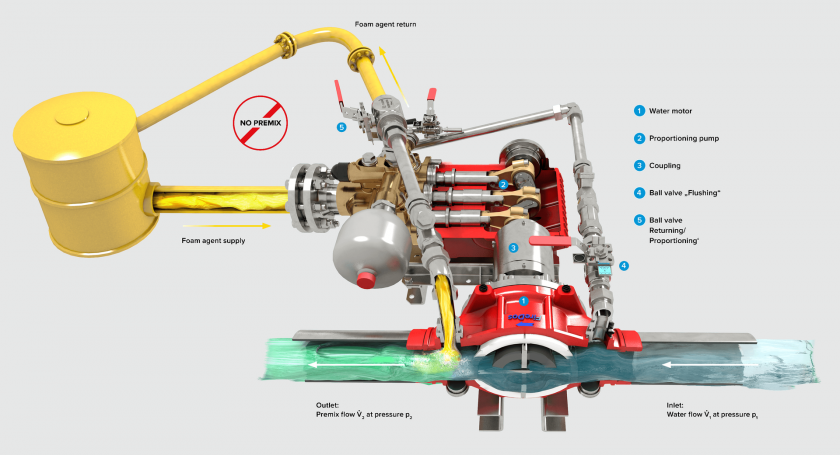
FIreDos proportioner with environmental friendly foam rate testing
Foam concentrate return when testing the mixing rate
Fire extinguishing systems must be tested regularly to ensure their functionality in case of fire. The same applies for the proportioning system. The return line connection enables return of the foam agent back into the foam agent tank under live operating conditions while its volumetric flow rate is measured. The results of this and the measured quantity of water which passes through the unit at the same time are used to calculate the proportioning rate. While doing so, no premix or firefighting foam is produced.
This is how easy, environmentally friendly and economic foam proportioning rate testing can be:
- The testing cycle can be activated via the ball valve 'Returning / Proportioning'.
- While the extinguishing water is circulating, the flow rate is measured.
- The water motor drives the proportioning pump in a direct ratio to the extinguishing water.
- Foam agent is circulated back to the foam tank and measured by a magnetic-inductive flow meter.
- The proportioning rate can be calculated.
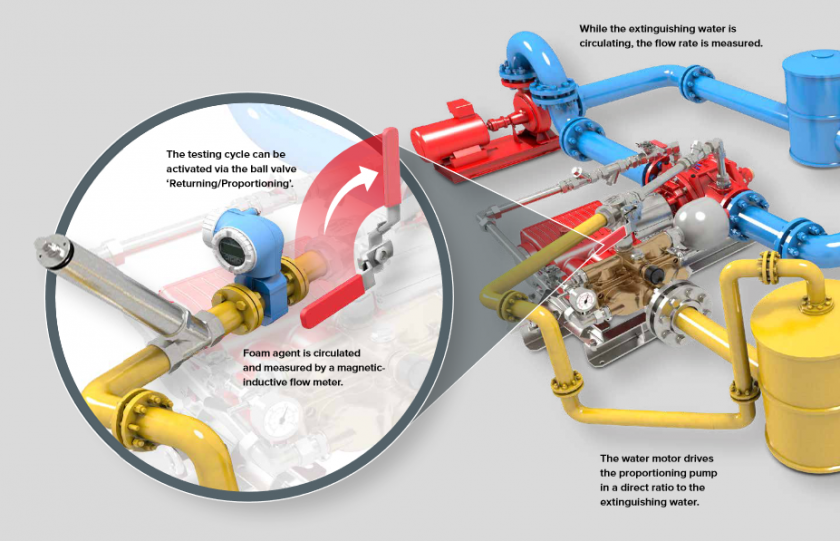
Proportioning rate testing with FireDos foam proportioners
Water supply reduction by using wetting agent
The majority of bush- and wildfires are extinguished with water. For the past year FireDos has been promoting the use of wetting agents as an alternative.
Wetting agents, known since the mid-1960s, is known as water mixed with a regular foam concentrate in a greatly reduced mixing rate. Generally mixing rates of 0,1 % to 0,3% are used. They aim to reduce the surface tension of water, which enhances a fire brigade's ability to suppress fires more rapidly. The water's wetting capability is improved thereby providing faster penetration and greater fire control while minimizing post fire clean up time and conserving valuable water resources. About 60% of the water, mixed with a wetting agent, is needed, compared to pure water.
The intelligent use of chemicals, such as foam agents, can have a great effect by reducing the chemical load induced into the environment, conserving resources like water, and protecting nature by speeding up extinguishing results. The FireDos proportioning technology are optimally suited to produce wetting agents.

Liquids with different surface tension. Left: extinguishing foam, center: wetting agent, right: water
More efficient extinguishing means less collateral damage
Beside the above mentioned more efficient use of firefighting resources the industry is also offering and advancing technologies that will allow a quicker detection and extinguishing of developing fires. This in return will not only reduce the amount of resources used, but also reduce the damage to property and environment as well as possible collateral damage.
Early fire and hot spot detection with automatic extinguishing
There is a high risk of fires, especially in waste to energy, recycling, wood, and paper processing plants. Early fire detection systems using infrared detection allow early identification of potential fire sources, resulting in rapid alarm and associated quick response times. Hazardous hotspots, created by hot gases migrating to the surface within a waste bunker or storage heap, that may turn into an extended fire are identified within minutes, even before smoke or flames may appear. This way fires can be extinguished before they have developed into large scale fires, which reduces the environmental impact greatly.
The early fire detection system allows the full-surface monitoring of large areas using panoramic thermal imaging. Combined with intelligent analyzing software, this enables the precise localization of a fire source. If this location is relayed to remote-controlled fire monitors, pinpointed extinguishing with water or foam can immediately commence. Even though the fire brigade should still be alerted, the threat of an open fire can be efficiently tackled at a very early stage. The extinguishing approach in a limited area will help reduce collateral damage and avoid lengthy and costly system downtime with little effort. Suppliers like FireDos offer a variety of coupled fire detection and automatic extinguishing systems.
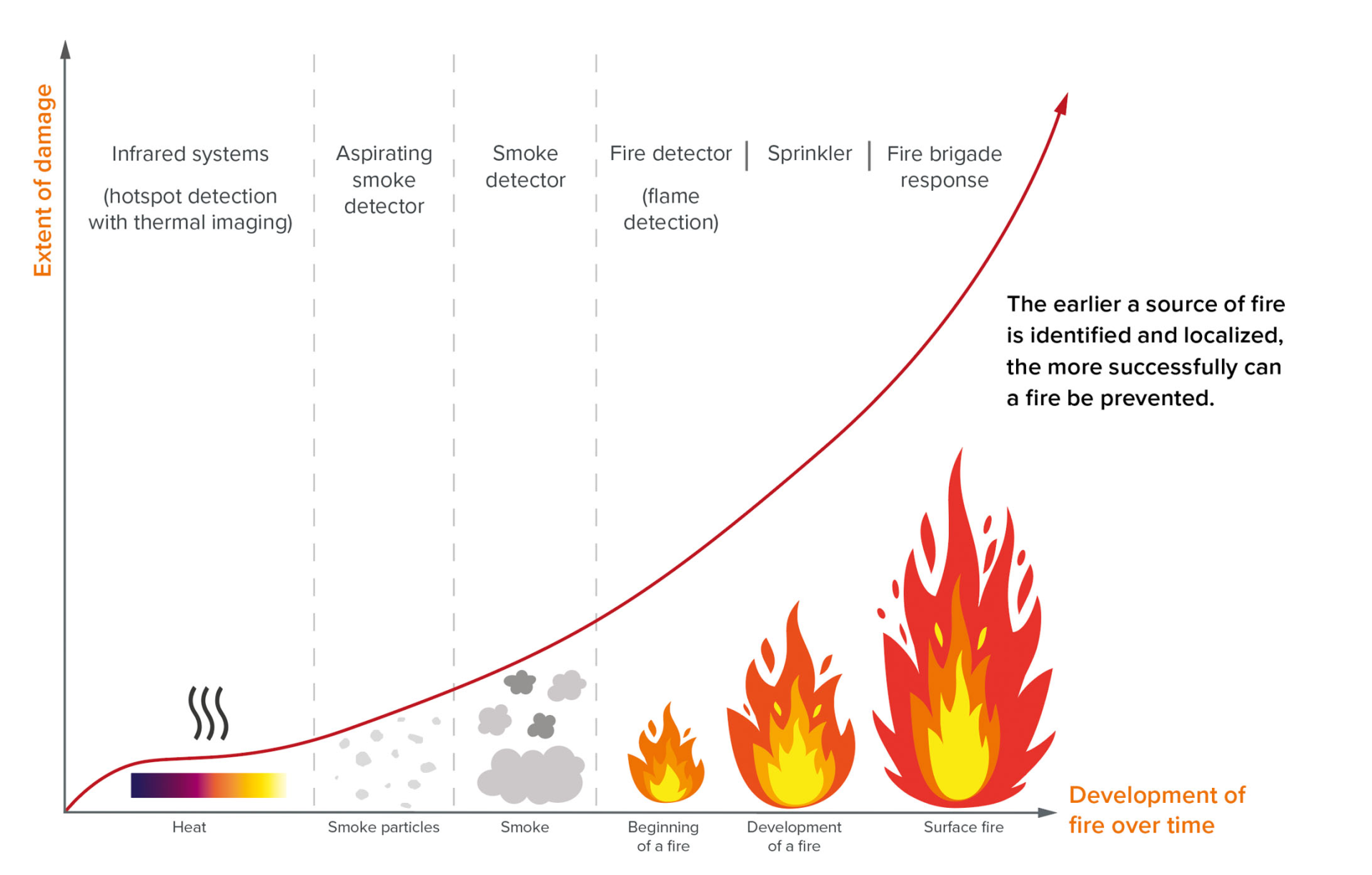
Switch to non-fluorinated foam agent
Legislations in various parts of the world have started to ban the use of Fluorine in firefighting foams, primarily for the protection of people and animals, as it is very harmful to the health. The industry has reacted to develop less harmful foam agents, however, for a large part, the suitability for all foreseeable extinguishing scenarios still must be proven and they have to be approved by the authorities.
With the switch to environmentally more friendly foam agents being a step towards environmental protection, FireDos concentrated its focus on the technology necessary to proportion these new foam agents. In contrast to the most widely used AFFF and AFFF-AR, the foam agent concentrates developed by the various foam agent manufacturers are based on different formulations, which have different physical properties. In general, an increased viscosity and plasticity can be assumed in comparison to the Fluorine-containing foam concentrates. Due to the different physical properties of the foam agents, the necessary proportioning or mixing equipment must be checked for suitability. With one of the development focusses of the FireDos GEN III foam proportioners having been high viscosity Fluorine-free foam agents, it can be said that all FireDos Gen III proportioners are designed to function with the new foam agents.
conclusion
Wherever you look environmental protection and sustainability are moving up on many agendas. And that is a good thing. But if you really want to move ahead, you must start immediately, find holistic solutions, and apply them consistently. And thanks to the availability of long-lasting technologies and innovative developments, it not only protects living beings and property, but also makes the planet safe in the long term.
This may also be of interest for you:
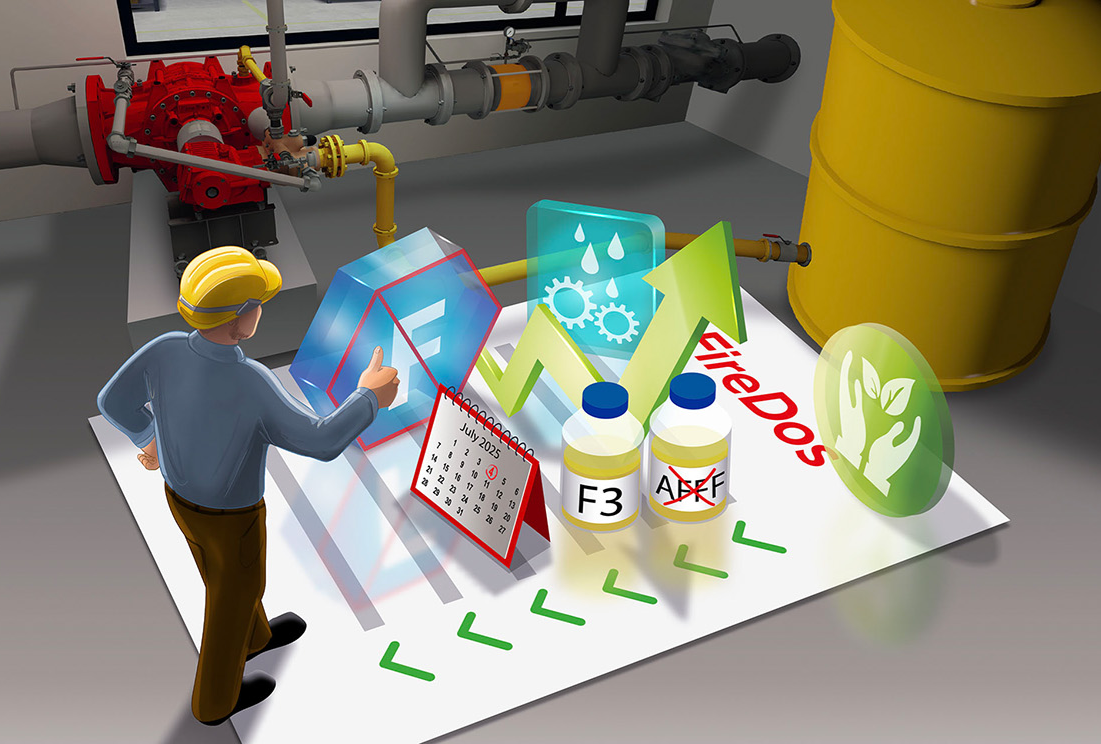
Consulting package "Fluorine free"
Learn how to retrofit your extinguishing system to fluorine free foam agents.
View more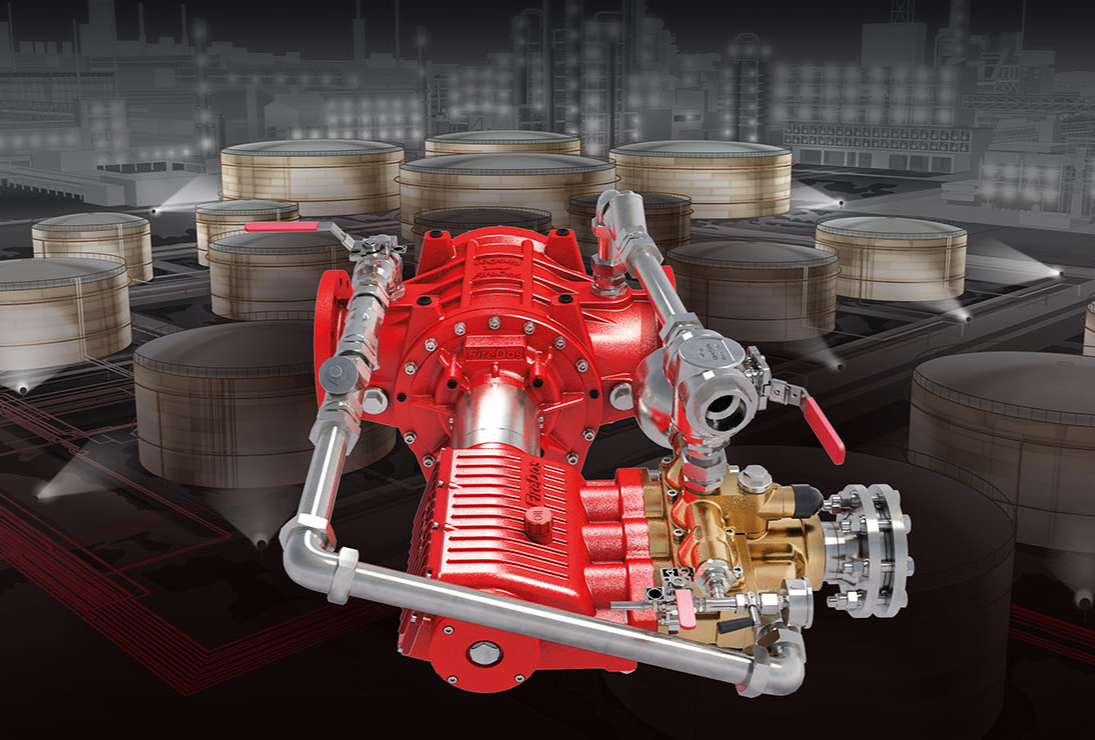
Stationary foam proportioners
Reducing costs, enhancing performance - explore the advantages
View more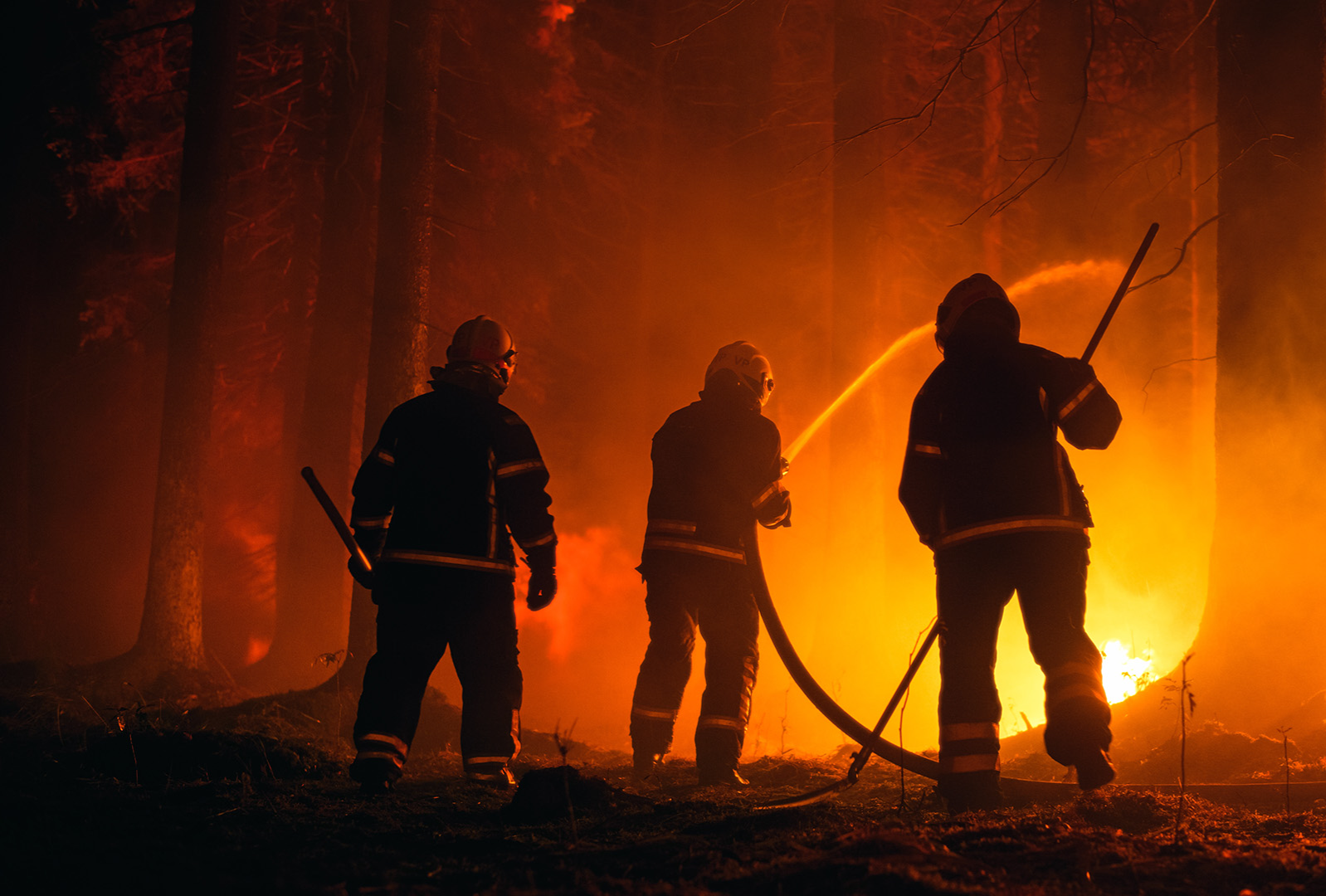
Fighting wildfires: Our solutions for firefighters
Extinguishing vegetation fires quickly and in an environmentally friendly way
View more